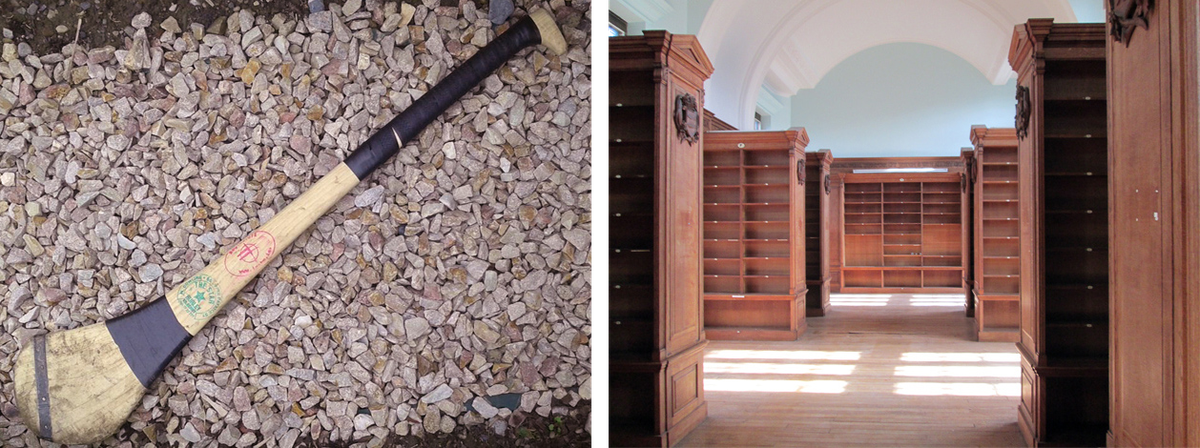NIALL MCLAUGHLIN RECEIVES AN HONORARY ROYAL DESIGNER FOR INDUSTRY AWARD
DECEMBER 2015
The title ‘Royal Designer for Industry’ is awarded annually by the Royal Society of Arts to designers of all disciplines who have achieved ‘sustained design excellence, work of aesthetic value and significant benefit to society’. The RDI is the highest accolade for designers in the UK; only 200 designers can hold the title and non-UK designers may receive the honorary title Hon RDI.
This year there were 8 RDI’s awarded. Alongside Niall McLaughlin were Ronan Bouroullec and Erwan Bouroullec who both also received an Hon RDI for their progressive and influential work across products, furniture and public spaces and impact on contemporary design culture, Michael Anastassiades RDI for his excellence and innovation in lighting design and supporting young designers, manufacturing and making in the UK, Kate Blee RDI for contributing her outstanding expertise in textiles to social investment projects and therapeutic public spaces, Kim Colin RDI for her sustained excellence in product design and applying design thinking to create thriving and sustainable enterprises, Karen Nicol RDI for pushing new boundaries in fabric and stitch design, promoting recycled textiles and designing for Fine Cell Work that teaches creative needlework to prisoners and David Pearson RDI for his distinctive and innovative contribution to British publishing and commitment to design education.
The Royal Society of Art’s Chief Executive Matthew Taylor commented ‘The RSA is committed to encouraging and rewarding outstanding designers who challenge convention, discover new insights, and improve our quality of life. These eight leading practitioners are from wide-ranging disciplines and are united by a driving commitment to innovate, create, educate and inspire others through design’.
Current architects with the title of Royal Designer of Industry are; David Chipperfield, Peter Clegg, Edward Cullinan, Norman Foster, Eva Jiricna, John Pawson, Alan Stanton, Sarah Wigglesworth, and Paul Williams.
Current architects with the title of Honorary Royal Designers are; Mario Bellini, Andrea Branzi, Antonio Citterio, and Peter Zumthor.
CRAFTLINES
AUGUST 2015

My grandfather has worn many hats; soldier, civil servant, father of seven, husband, and winner of a county final in hurling (the achievement of which he is potentially most proud). He is fluent in Irish and recalls event and dates from 50 years ago with a staggering accuracy. Yet the residing image of him from my childhood is as a craftsman – in the garage next to his house in Dublin, whittling and sanding a piece of ash to form a hurley, sizing it precisely for the user, wrapping the handle to create the perfect hold. I remember sitting, playing surreptitiously with a clamp, watching this in awe: the creation of the perfect instrument from a piece of timber; a skill honed through practice and an unfailing attention to detail. I marvelled at the assurance of it all, the promise in his hands.
It would be satisfyingly simple to attribute my choice of career to these moments – to claim there was an epiphany in watching him, a sudden realisation that I wanted to be an architect, to create. In reality, however, the path was not so linear; instead the conviction that I wanted to become an architect embedded itself in my consciousness slowly, over time. The memory of him working in his garage was one I didn’t return to often, and like any story we fail to repeatedly tell ourselves, it languished, dormant, in the recesses of my mind.
I recently went to site at Jesus College, Cambridge, where we are working on a project that is part new build, part refurbishment. An aspect of the refurbishment involves the adaptation of eight bookcases in the magnificent former library into wall panelling. The existing bookcases are a dark stained timber, designed by Maurice Webb in the 1920s and wonderfully crafted by a masterful hand. Reworking these without compromising their beauty would be a challenge for any craftsman.
On seeing the work the joiner had done, I realised there was no cause for worry – it had been executed with confident, competent hands. In that moment, the memory of my grandfather in his garage came back to me in glorious Technicolor; and I felt a familiar thrill at the embodied potential of the right material in the hands of a craftsman, with promise in his hands.
